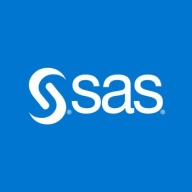

Find out what your peers are saying about BMC, Broadcom, JAMS Software and others in Workload Automation.
| Product | Market Share (%) |
|---|---|
| Amazon Managed Workflows for Apache Airflow | 1.6% |
| SAS Workload Management | 0.2% |
| Other | 98.2% |
Amazon Managed Workflows for Apache Airflow streamlines the deployment and management of data pipelines using Apache Airflow on AWS, providing a scalable and secure environment for workflow orchestration.
It allows users to easily create and monitor their workflows, leveraging seamless integrations with AWS services and ensuring compliance with security and operational best practices. The service handles the underlying infrastructure, freeing users from tasks like provisioning and scaling, while also offering enterprise-grade capabilities, such as the ability to manage sensitive data with robust security features.
What features make Amazon Managed Workflows for Apache Airflow valuable?Amazon Managed Workflows for Apache Airflow is widely implemented across industries such as e-commerce, finance, and healthcare, where complex data pipelines are essential for operational decision-making and analytics. Companies benefit from its ability to manage large volumes of data efficiently and integrate with diverse data sources, enhancing their analytical capabilities.
SAS Workload Management optimizes resource allocation in analytics environments, ensuring efficient task processing and improved performance. It supports the management of diverse workloads, enabling organizations to align resource availability with demand.
SAS Workload Management offers a sophisticated approach to managing workloads in analytics environments by ensuring resources are utilized effectively. It automatically prioritizes tasks and balances workloads across platforms, reducing bottlenecks and enhancing overall efficiency. By integrating with existing infrastructure, it helps streamline processes and improve response times for critical applications.
What are its most important features?In industries like finance and healthcare, SAS Workload Management is implemented to ensure high-volume data processes are handled efficiently, such as managing transaction loads in banking or patient data in healthcare. It helps maintain performance standards and compliance by providing reliable and timely analytics, crucial for sector-specific demands.
We monitor all Workload Automation reviews to prevent fraudulent reviews and keep review quality high. We do not post reviews by company employees or direct competitors. We validate each review for authenticity via cross-reference with LinkedIn, and personal follow-up with the reviewer when necessary.